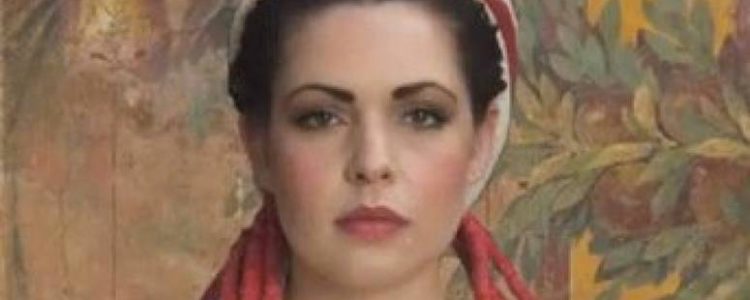The wealthy Roman woman had a slave specially trained in the art of applying makeup, lotions, and perfumes. Her valet’s title was cosmetae, meaning “to anoint and paint.” The higher the lady’s status, the more makeup she wore. Regardless of class, the majority of Roman women used toiletries, else wise were not considered attractive. The exception were the “holy and pure” Vestal Virgins.
Popular eye shadow colors were minerals of blue azurite and poisonous green malachite, along with charred rose petals mixed with ground date pits. Chalk, lead, and marl clay whitened the completion, and human saliva was thought to be an effective foundation base. Some cosmetriae would chew the cake or tablet of makeup before applying it on their mistress’ face. Pliny describes a woman’s complexion as being “excessively greasy.”
Mascara made from burnt cork was used to extend and thicken lashes. Pliny wrote that females with sparse or missing ones were considered impure, but those with long curly ones were thought to be chaste. He suggested a mascara recipe made from ants’ eggs, crushed flies and bear’s fat.
Eyeliner and brows were darkened with kohl and soot applied with a rounded stick made of ivory, glass, bone, or wood. It was fashionable to have eyebrows drawn straight out until they nearly met. Extravagant beauty products and containers were available from China, Germany, India, and Gaul.
Martial mocked women who wore rouge (blush), because it ran down their cheeks during hot weather. The pigments came from various sources, including red ochre powder imported from Belgium, rose pedals, brown seaweed, Tyrian vermillion, or poisonous red lead mixed with dung. Cheap alternatives were mulberry juice and wine dregs. Egyptian women used lipstick made from a mixture of bromine, beetle juice, beeswax, and a bit of henna. There is scant archeological evidence that Roman women colored their lips.
Anti-aging products were made from chemicals, botanicals, and excrement. Therapeutic masks could include various blends of gladiator sweat, placenta, dung, animal urine, sulphur, honey, eggs, vinegar, bean meal, ground oyster shells, bile, asses’ milk, gum arabic, sweated sheep’s wool (lanolin), and swan’s fat.
Deodorants were produced from a distillation of macerated alum, iris, and rose pedals mixed with oil. Main ingredients in toothpaste were urine, dung, white clay marl, and lead. Because body hair was an identifier of class, both men and women utilized depilatories such as a strigil, resin, hot bee’s wax, pumice, and plucking. Only hair on the head was considered attractive. Generally, the poor did not clip their fingernails. Manicures were reserved for the wealthy whose nails were buffed and trimmed by their personal tonsor (barber).
Perfume was an important part of grooming. If a person smelled good, they were presumed to be healthy. This posed a serious challenge due to the stinky ingredients of toiletries. In an effort to conceal the putrid odor, women drenched themselves in perfume. So much so that it caused Cicero to remark: “The right scent for a woman is none at all.” Ironically, whale’s vomit was used as an adherent in some fragrances. The effort to mask the smell of makeup and skin therapies contributed to a flourishing trade of imported perfumes. Pliny said that public theaters were sprinkled with rose water.
Decorative leather “beauty patches” were used to cover unsightly blemishes and the branding marks of freedmen. Shapes were made to imitate a crescent or round beauty mark. It appears that the Romans had a significant acne problem, as Pliny records numerous types of pimples along with their many cures.
Mirrors were typically of polished metal, however, glass mirrors did exist. Pliny the Elder recorded that lead, mercury, and gold coated glass mirrors were invented as early as A.D. 77.
“Fabula, says Martial, feared the rain on account of the chalk upon her face, and Sabella, the sun, because of the cerise with which she was painted.” Martial Epigrams, book II.
All Rights Reserved
Excerpt from Ancient Minutus
